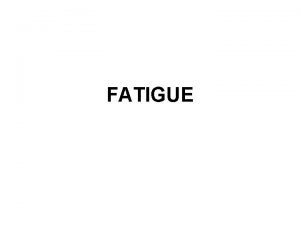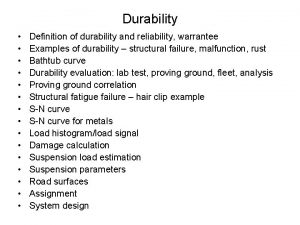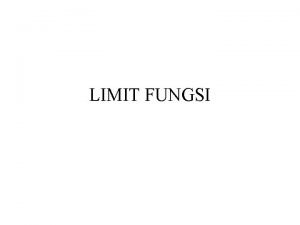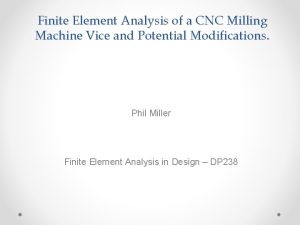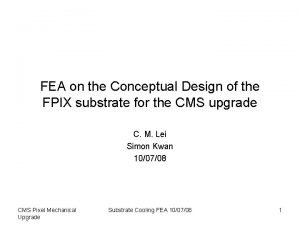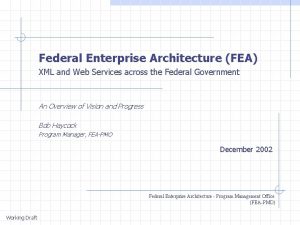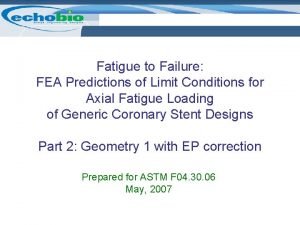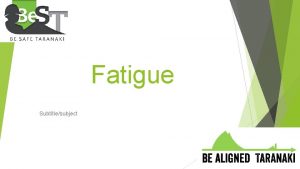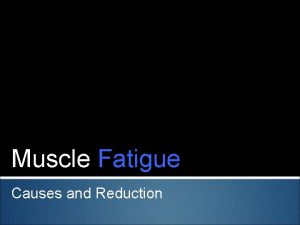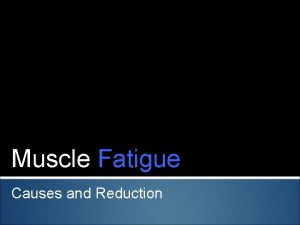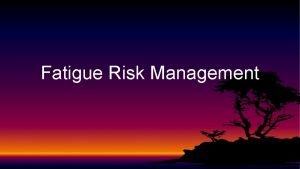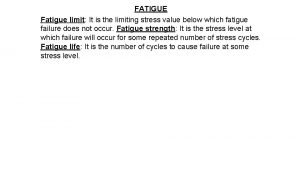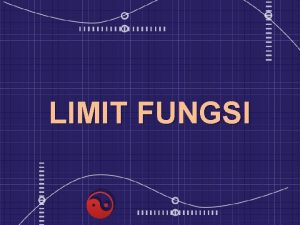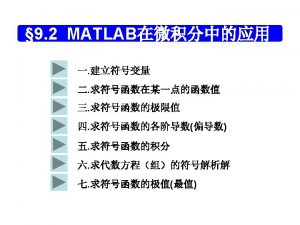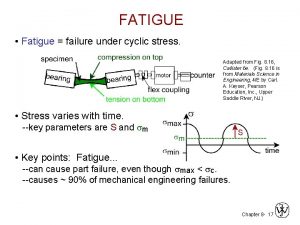Fatigue to Failure FEA Predictions of Limit Conditions














- Slides: 14

Fatigue to Failure: FEA Predictions of Limit Conditions for Axial Fatigue Loading of Generic Coronary Stent Designs Prepared for ASTM F 04. 30. 06 October 26, 2006 Rockville, MD

Objective • Determine axial fatigue loading conditions to generate fracture in 1 M cycles • Evaluate the effect of residual stress and cold work due to balloon expansion process – Applied stress affected by underlying residual stress – Limit conditions affected by presence of cold work

Methodology / Assumptions • Use FEA to determine axial extension corresponding to allowable alternating stress for four cases: – Expanded stent, with residual stress and cold work (typical protocol for balloon expanded stent) – Expanded stent, annealed, cold work considered – Expanded stent, annealed, cold work not considered – Unexpanded stent (no residual stress or cold work) • Limiting alternating stress – Based on endurance limit (Se = 0. 5 Sult), assumes 1 M cycles – Extrapolated from typical S/N curve for 100 k cycles

Fatigue Scenario Studies Summary Case Configuration Stress State Strain State 1 Expanded Residual Stress Cold Work 2 Expanded (annealed) No Residual Stress Cold Work 3 Expanded (annealed) No Residual Stress No Cold Work 4 Not Expanded (As Cut) No Residual Stress No Cold Work Part_2_058 OD_5 L

Stent Expansion: Residual Stresses, Cold Work Stresses during Expansion and Recoil Plastic Strain due to Cold Work

Modified Goodman Approach to Endurance Limit Case 2 Case 1 Stress Amplitude Se (cold work) Cases 3, 4 Sult, Se Increase with Increasing Cold Work Mean Stress effected by Residual Stress State Mean Stress Sult (cold work)

Effect of Residual Stress Effective stress during extension with residual expansion stress Case Extension Max Stress Effective stress during extension without residual expansion stress Comments Residual Stress +0. 1% 290 MPa -Large tensile and compressive stresses in the middle of struts and bridges -Yield stress increased due to load history No Residual Stress +0. 1% 200 MPa -Uniform load path with unaltered yield stress

Effect of Cold Work on the Tensile Strength Typically Accepted Value for the Endurance (Shigley), assumes 1 M cycles 810 MPa 520 MPa Se ~ 0. 5 Sult Effective Plastic Strain % Cold Work Tensile Strength Endurance Limit 1 M+ cycles 0 520 MPa 260 MPa 17 810 MPa 405 MPa 0% 17% Handbook of Materials for Medical Devices, Editor J. R. Davis, 2004

Case 1 – Expansion, Residual Stress and Cold Work

Case 3 – Expanded, No Residual Stress, No Cold Work

Fatigue Scenario Studies Endurance Limit Fatigue Conditions 1 M+ cycles Stress State Strain State Expanded Residual Stress ~120 MPa Cold Work ~7% Point by Point ~320 MPa ± 0. 21% Expanded (annealed) No Residual Stress Cold Work ~7% Point by Point ~320 MPa ± 0. 19% Expanded (annealed) No Residual Stress No Cold Work 260 MPa ± 0. 14% Not Expanded (As Cut) No Residual Stress No Cold Work 260 MPa ± 0. 10% Case Se ~0. 5 Sult Failure Location (Bridges)

Fatigue to Failure at 100 k cycles Case Fatigue Conditions 1 M+ cycles 100 k cycles Expanded ± 0. 21% ± 0. 30% Expanded, annealed, cold work considered ± 0. 19% ± 0. 27% Expanded, annealed, no cold work considered ± 0. 14% ± 0. 21% Not Expanded (As Cut) ± 0. 10% ± 0. 14% Estimation of Fatigue Strain-Life Curves for Austenitic SS in Light Water Reactor Environments, Chopra and Smith, 1998

Observations • Effect of residual stress is small – 0. 21% versus 0. 19% predicted extension amplitude • Effect of cold work more significant – 0. 21% versus 0. 14% predicted extension amplitude • Sensitivity regarding 100 k versus 1 M cycles – 0. 21% versus 0. 30% predicted extension amplitude • Asymmetry due to bridge configuration

Recommendations • Follow typical balloon expanded stent protocol: assume residual stress and cold work – Perform testing with ± 0. 21% predicted extension – Should produce failure at 1 M cycles • Consider also testing at higher levels: – For example: ± 0. 25 or ± 0. 30% – Should produce failure closer to 100 k cycles • Grip it and rip it!
 Fatigue beach marks
Fatigue beach marks Durability testing definition
Durability testing definition Ductile fracture
Ductile fracture Non conducted pac ecg
Non conducted pac ecg Vvi pacemaker
Vvi pacemaker Upper specification limit and lower specification limit
Upper specification limit and lower specification limit Limites de control
Limites de control Pengertian limit fungsi secara intuisi
Pengertian limit fungsi secara intuisi Central limit theorem conditions
Central limit theorem conditions State central limit theorem
State central limit theorem Difference between fea and fem
Difference between fea and fem What is fea
What is fea Fea
Fea Tpg
Tpg Fea framework
Fea framework
